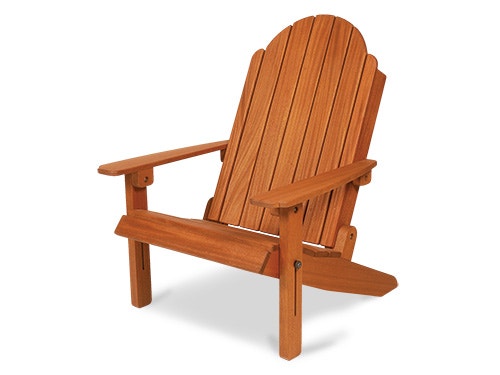African Mahogany: Khaya grandifoliola, senegalensis
While a number of species you'll run across at a hardwood lumberyard are well-suited for both fine furniture and outdoor projects, none are probably more attractive than African mahogany. In quartersawn form, the wood exhibits a wavy, interlocked grain pattern with sparkly glints of chatoyance under a clear finish that catch the eye. It cuts, routs and fastens easily, with a medium density similar to alder or poplar. The wood stains evenly and predictably. It accepts both oil- and water- based finishes well when brushed or sprayed.
True Mahogany?

The name African mahogany applies to a variety of species of African hardwoods in the genus Khaya. Each of the species are adapted to different conditions, which range from the tropical rainforests of the West Coast to sub-Saharan dry lands of east Africa. Scientists have long debated whether the African varieties, although they are in the same family as the American mahoganies, are themselves true mahogany.
Trees can grow to heights exceeding 115 feet, with 5-ft. or larger diameters. Some of the species are widely planted as shade trees in their native Africa as well as Asia. They also are valued for medicinal purposes.
The bulk of the timber shipped in the past consisted of two species of African mahogany (K. ivorensis and K. anthotheca from the Ivory Coast, Gabon and Nigeria). These were the more tropical species and were low to moderate in density and pale to medium-red in color. As these species became more difficult to find, more recent exports have turned to K. grandifoliola and K. senegalensis, which are native to Sudan, Uganda and French Guinea. These are generally more dense and darker in color and more closely resemble their American counterparts.
Mahogany was first used by Europeans as early as Cortez; it is recorded that he used mahogany to repair his ships. By 1750, American mahogany was widely used, and by 1880 exploitation of natural stands led to the search for suitable alternatives. Exportation of African mahogany to America and Europe began around 1890 and has increased in volume ever since. Although the United States was once the top importer of African mahogany, China now has overtaken that position.
African mahogany is moderately priced, comparable to walnut or cherry, and its suitability as an outdoor project wood makes it an even more versatile option.
|
Uses: Furniture, caskets, cabinetry , veneer, plywood, millwork, pattern-making, boat -building. Hardness: Medium with moderate bending properties; low stiffness and crush resistance. Country of Origin: Tropical to sub-Saharan Africa. Workability: Medium density makes mahogany easy to machine with sharp carbide cutters. Interlocked grain in quartersawn form can lead to tearing or fuzziness with dull blades and bits. Finishing: Responds consistently to pigment stains, dyes and common finishes. Polishes well. Cost: Moderately priced among premium hardwoods and when compared to rarer exotics. |
Keep the inspiration coming!
Subscribe to our newsletter for more woodworking tips and tricks



